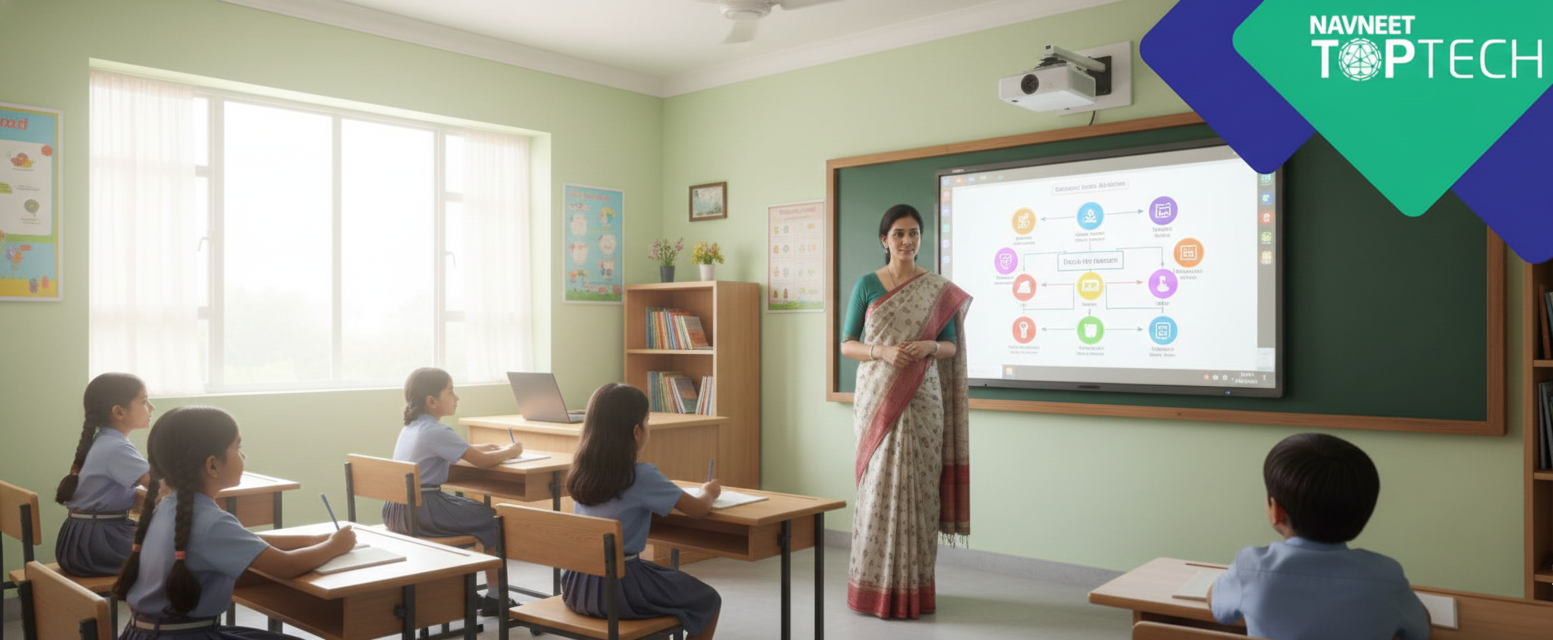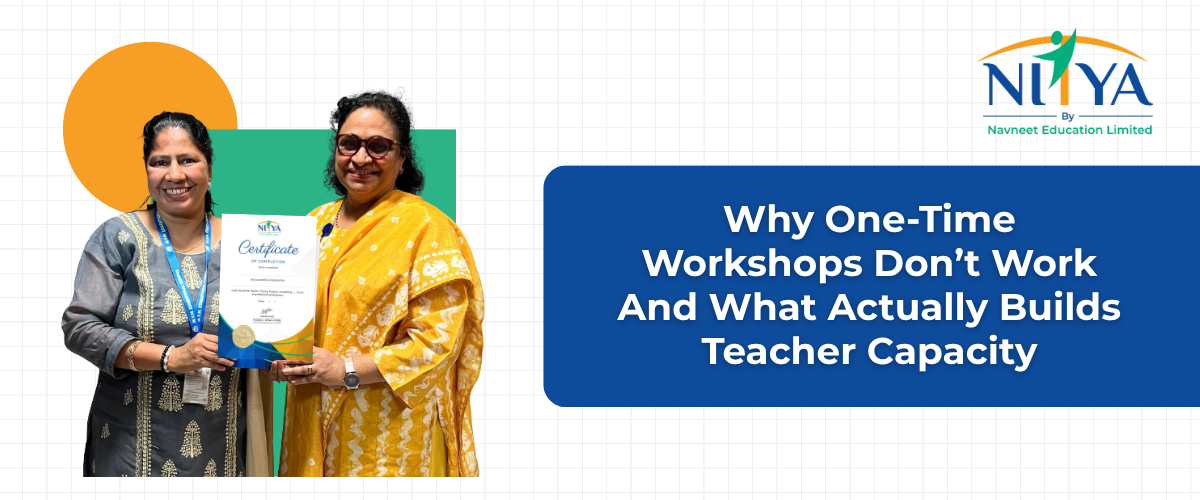In 2025, a school without a Learning Management System is like a library with no shelves—everything’s there, but nothing is organized.
India’s education system is evolving rapidly. With NEP 2020 pushing for digital integration and classrooms going hybrid or fully online, schools are adopting smarter tech faster than ever. One tool leading this transformation? A Learning Management System (LMS). But what is a learning management system? And why is it becoming a fixture in schools across India?
Especially when we talk about the learning management system for primary schools, the demand has grown rapidly. These systems are no longer limited to higher education—they’re being used in early schooling to create consistency and improve foundational learning.
In this blog, we will look at LMS in Indian schools and how it is changing how teachers teach and how students learn.
So, without further ado, let’s begin.
What is a Learning Management System?
A learning management system is a centralized platform that is becoming prevalent in Indian schools. It is like a one-stop shop where students can find all courses, lessons, and modules. Moreover, it is also the place where teachers plan and organize their classes, and the administrators can keep a tab on the performance of every child.
In other words, it is like the digital headquarters of any school. It is a platform where assignments are shared, marks and grades are posted, attendance is marked, and honest and unfiltered feedback is shared.
Be it the teachers, students, or administrators. The benefits of LMS for schools lie in the fact that it makes the learning process smoother and much more connected.
LMS Features: What They Do & Why They Matter in 2025
Feature Why It Matters Digital Classrooms Enables 24/7 access to lessons and materials to supports flipped and hybrid learning formats. Performance Tracking Helps teachers identify learning gaps early, personalize support, and improve overall academic results. Parent Access Builds transparency and trust so parents stay actively involved in their child’s progress. Teacher Dashboard Saves time on routine tasks so teachers can focus more on mentoring and real teaching. ERP Integration Reduces manual work — syncs attendance, grades, timetables, and fees into one seamless system. How LMS Is Used in Indian Schools
If we go back a decade and a half, there was no such thing as a learning management system in Indian schools. But now, things have changed. LMS in Indian schools takes care of the following activities on a day-to-day basis:
- Delivers online and offline content for students to learn and prepare.
- Tracks the performance and attendance of each student.
- Conducts interactive exams, quizzes, and other sessions to keep the learners engaged.
- Offers a centralized platform for students, teachers, administrators, and parents to stay connected for the academic well-being of the child.
- Provides a plethora of tools for grading, assessment, and student analytics.
In a nutshell, an LMS platform for schools in India is more than an option today. It is something that has become paramount to ensure smooth and feedback–based, interactive learning for the pupils.
Key Features of an LMS for Schools
Contrary to what some skeptics think, an LMS today is not limited to being a platform where learners and teachers upload videos and PDFs. It has become a much more comprehensive platform with features that make way for interactive and efficient learning.
Here are some vital features of an LMS for schools:
- Course and Content Management: It is a platform where teachers can constantly create, upload, update, and organize their lessons across subjects.
- Scheduling and Attendance Tracking: It comes with automated logs and calendars that help administrators keep a tab on all relevant classroom activities.
- Reporting and Analytics on Student Performance: Offers real-time data on students’ test scores and engagement.
- Communication Tools: Ensures interaction between teachers, students, administrators, and parents via chat, email, and other interactive forums.
- Compatibility and Compliance: Ensures 100% data security by being in line with all necessary compliance while also being mobile-compatible to boost ease of use.
Now that we know about the key features that are common among LMS platforms for schools, let’s discuss the benefits of LMS for Indian schools.
Top 5 Benefits of Learning Management Systems for Indian Schools
So, what are the learning management system benefits for schools, especially in India, where infrastructure and consistency vary widely?
Educational institutions in our country often fail to find ways to tick all the boxes. A robust learning management system can help them do that.
- Consistent Standard of Education: When teachers upload all courses and lessons on one centralized platform, all students get access to the same resources. It ensures that every pupil gets a level playing field and is prepared with the help of quality teaching material.
- Super-useful for Teachers: Another major benefit of a feature-filled LMS is that it enables teachers to track the progress of students, streamline lessons, and shift their focus to guiding and mentoring their pupils. Why? Because all the repetitive and administrative tasks are taken care of by the learning management system.
- Ideal for Remote and In-Person Learning: LMS only for online classes? Many people have this belief, and let us make it clear that it is a complete misconception. Of course, a learning management system is incredibly valuable for online learning. However, its capabilities go beyond remote learning.
- Parent-School Collaboration: Gone are the days when parents used to be largely clueless about what was going on with their children at school. Thanks to the LMS, parents can keep track of their child’s academic performance, attendance records, and any relevant and upcoming events.
- Data-Driven Decision Making: Modern LMS platforms provide detailed analytics on student performance, engagement levels, attendance, and more. These insights help teachers, school admins, and even parents make informed decisions. Whether it’s identifying students who need extra support or measuring the effectiveness of lesson plans, data from an LMS empowers schools to take timely and targeted action, improving overall academic outcomes.
Challenges Indian Schools Face Without an LMS
The Indian education system has been adapting for centuries. Today, a robust learning management system for schools in India has become paramount.
Schools that miss out on getting an LMS suffer several drawbacks of the same, including:
- Lack of fast and automated lesson planning for teachers, which takes a lot more time and robs them of efficiency.
- Unavailability of valuable student data, regarding their academic performance, participation, attendance, etc.
- Disjointed parent-teacher communication can hamper a student’s potential for growth in the long run.
- Trouble in scaling operations like adding new courses and lessons, onboarding a new batch of students, etc.
With LMS platforms for schools, all these drawbacks can be easily taken care of.
TopSchool by NAVNEET TOPTECH – Top LMS Platform For Schools
TopSchool is a powerful example of what an ideal learning management system for schools should look like in India, especially when tailored for CBSE and state boards. It addresses the unique challenges faced by Indian schools, from personalized learning to seamless parent-teacher collaboration.
TopSchool offers a holistic learning ecosystem with its easy-to-navigate, intuitive dashboards, in-depth reporting tools, and content tools that ensure that everything is aligned with the curriculum.
Some of its key features include:
- Quick and seamless integration with any ERP systems of the school.
- Analysis and reporting features like 360° report cards, Extended Learning Assignments (ELAs), and other online assessment options.
- Extensive digital storage, automated attendance records and monitoring, and timetable management tools to take care of administrative tasks.
- Dedicated dashboards for students, teachers, parents, and school owners to ensure ease of use for all types of users.
- Comprehensive analytics and reporting system that provides actionable insights to asses and improve student performance.
Which is the best LMS Platform?
Finding an answer to a question like What is the best LMS platform is quite tricky. We believe it depends on the school’s unique needs and preferences in terms of curriculum, scaling, etc. However, finding the best among the LMS platforms for schools in India is key to making learning simpler, smoother, and more efficient.
Irrespective of whether your school follows the remote learning, hybrid, or in-person format, a learning management system can help both your learners and teachers.
Moreover, with LMS platforms like TopSchool in the market, which are suited for CBSE and even state boards, there’s no point in delaying.
TopSchool offers a holistic learning ecosystem with its easy-to-navigate, intuitive dashboards, in-depth reporting tools, and content tools that ensure that everything is aligned with the curriculum.
For schools in India—especially those following CBSE and various state boards—TopSchool stands out as a powerful solution that simplifies learning, boosts engagement, and enhances school efficiency.
It brings structure, convenience, and insight into every aspect of learning and teaching, helping schools operate more efficiently.
Choose a platform that helps your students learn better, your teachers teach better, and your school performs better.




